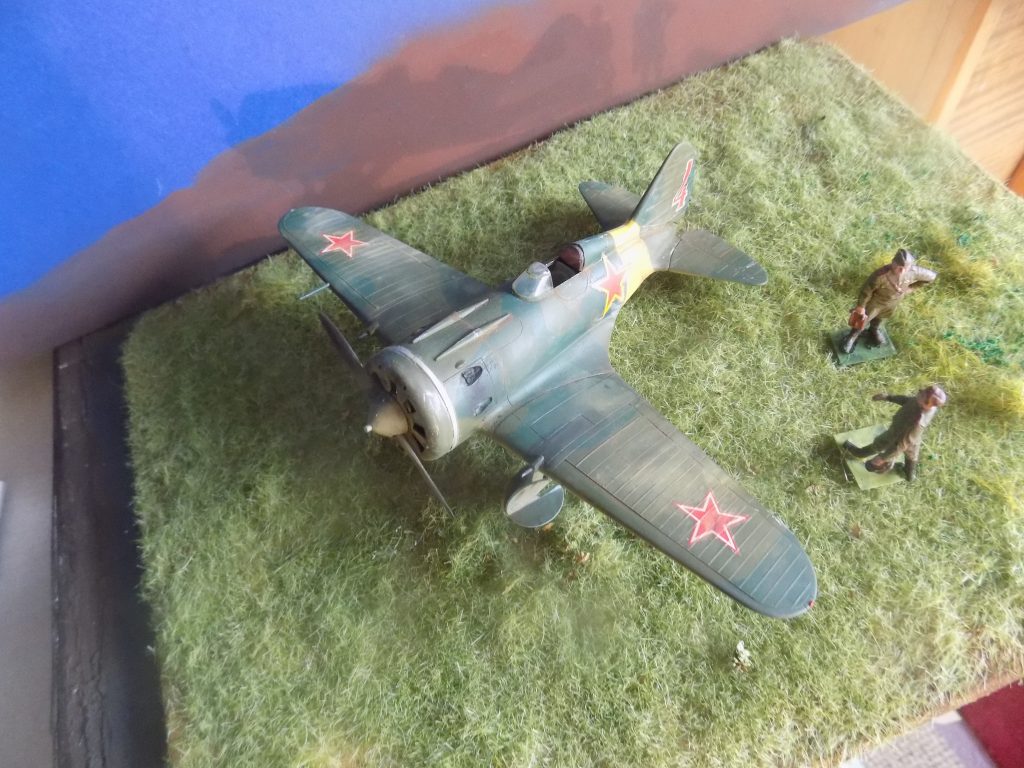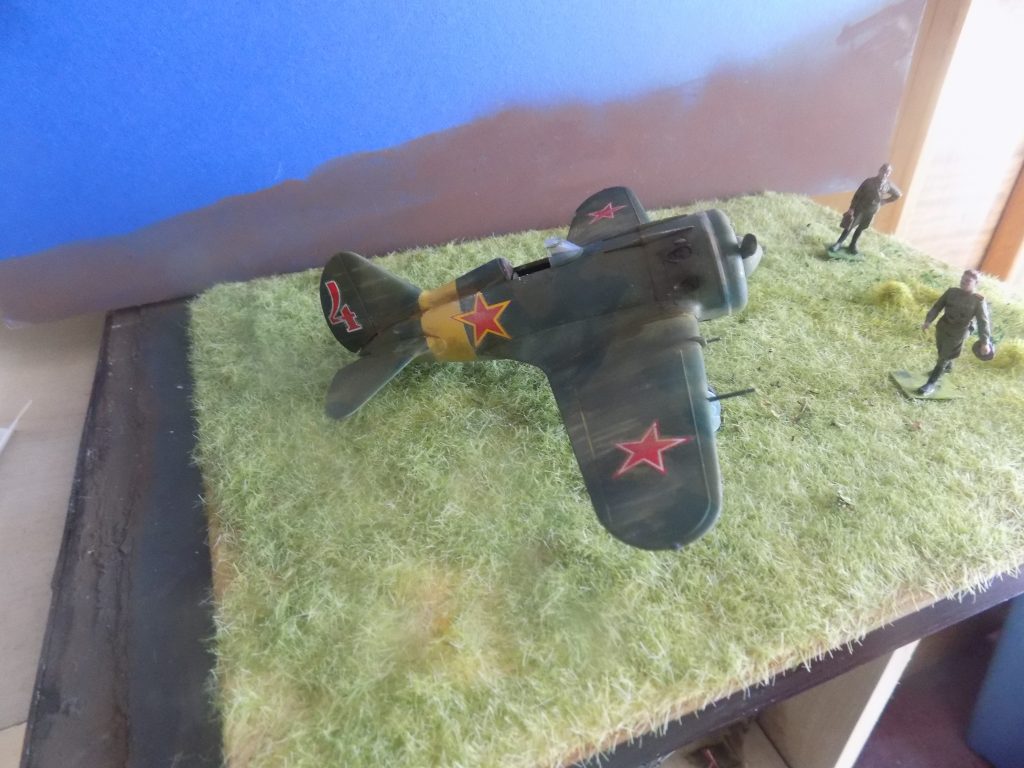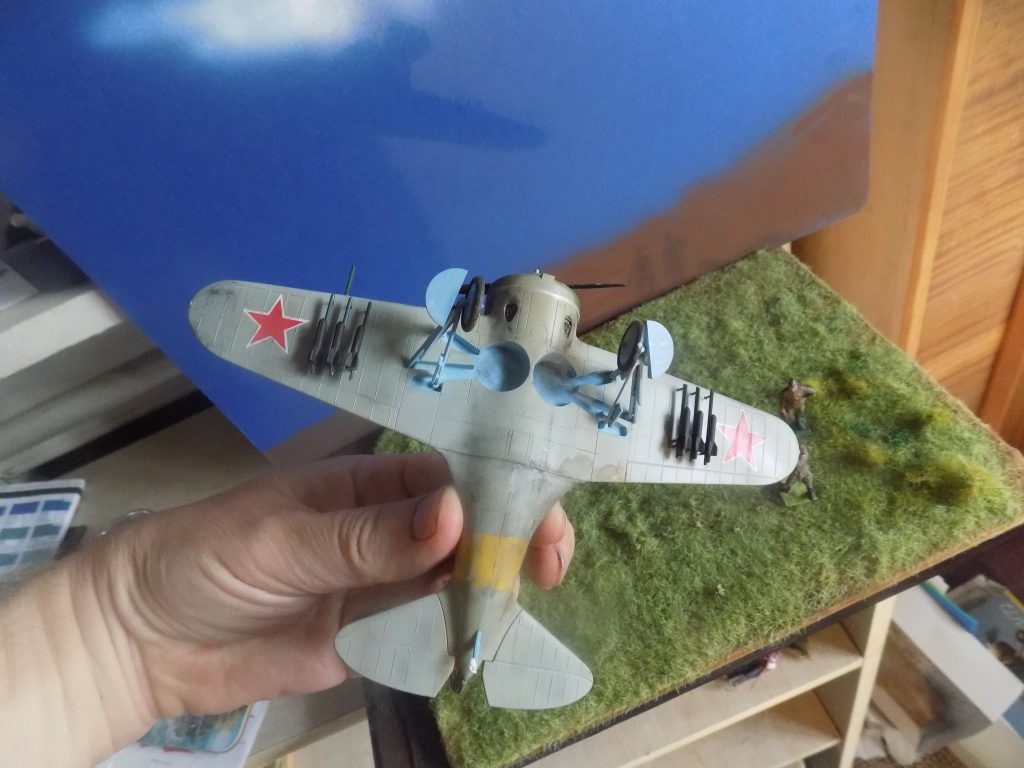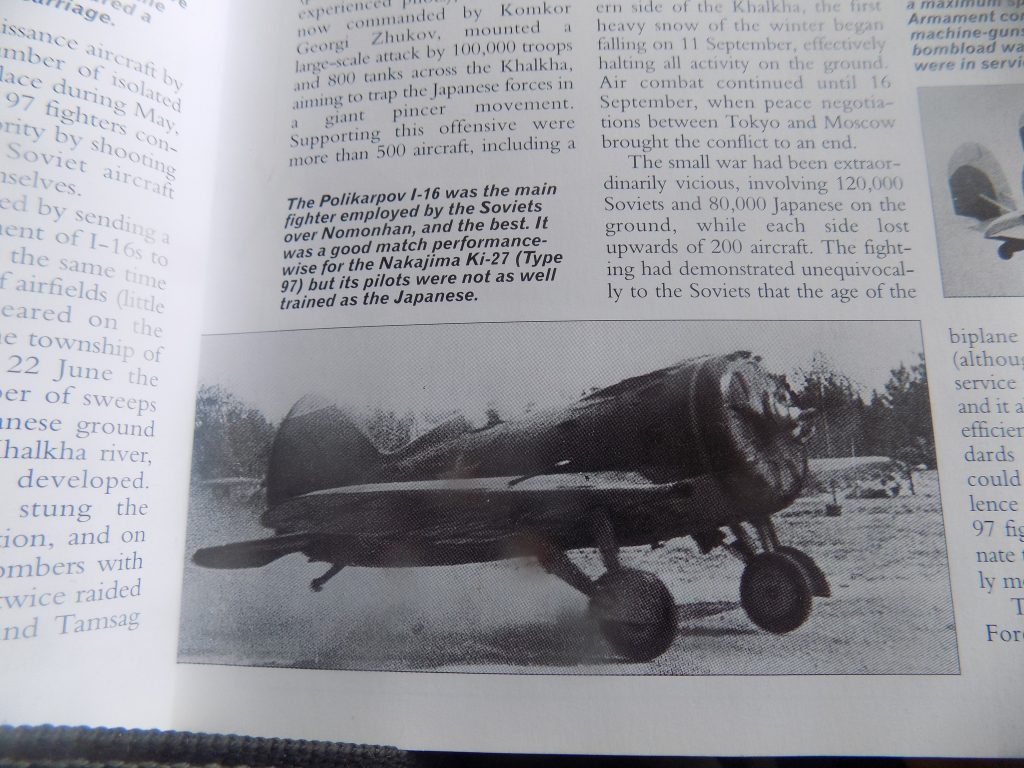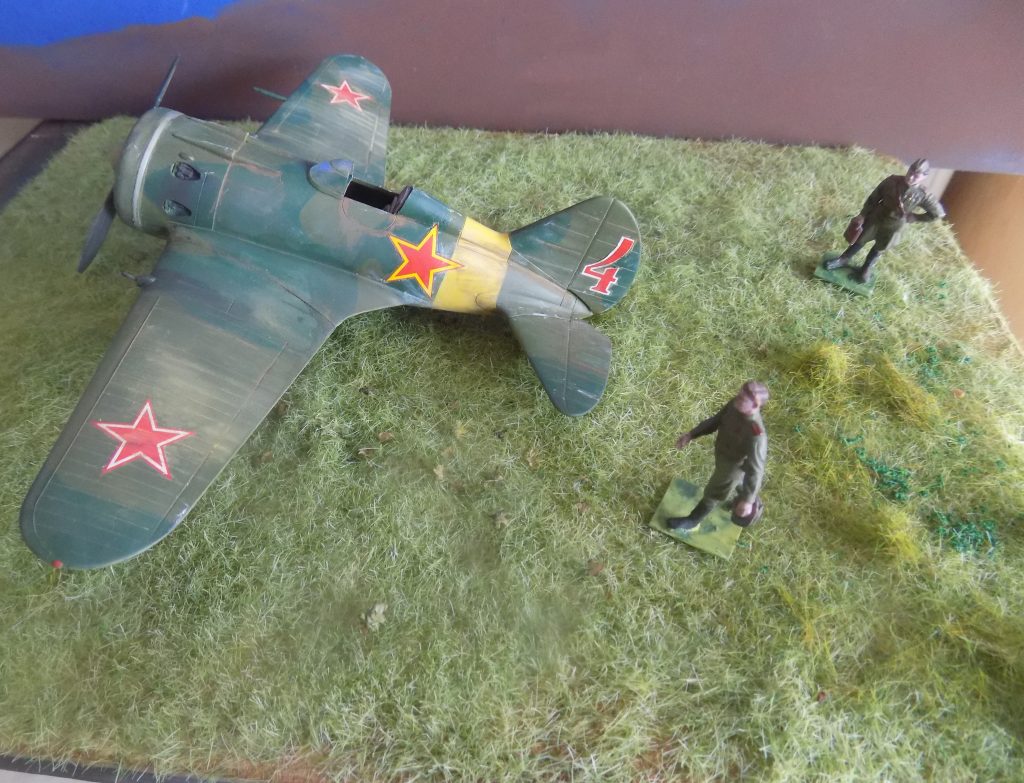
The short, stubby I-16 occupies a special place in my affections as my Father recalls seeing them at the start of the German invasion of the USSR in June 22, 1941. He said they were referred to simply as ‘istrebitelyi‘, from the Russian word ‘istrebitel‘, which means ‘fighter’. The Soviet pilots nickname of “Ishak” or “Ishachok” (“Donkey” or “Little Donkey”) apparently derived from the designation I-16 which in Russian sounds like ‘ee‘ and ‘shestnadtsat‘ (’16’).
This is what my Father said about these planes in 1941 in his memoir (p.86 3rd ed.):
“Before the war, the Soviets had masses of aircraft and we used to watch the Soviet Istrebiteli or ‘fighters’, as we simply called them in Russian, flying in huge formations of thirty or forty planes. But these stubby little fighters with their open cockpits looked completely obsolete in comparison to the sleek German Messerschmitts and now the Red Air Force had disappeared from the skies, most of its planes having been annihilated on the ground.”
I am not exactly sure but I think this is the Academy kit of the I-16 type 24. It is a very simple, straightforward build out of the box.
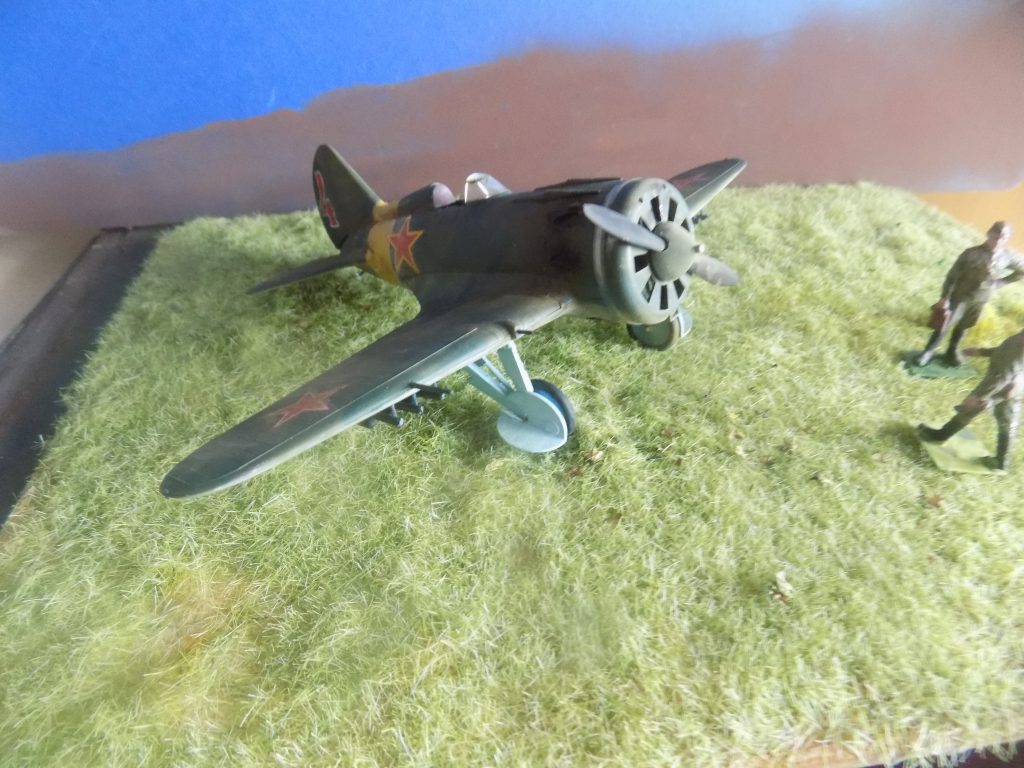
First flown in 1933, the legendary I-16 was one of the first mass produced monoplanes with retractable undercarriage in the world.
Along with the phenomenally successful I-15, it helped secure Polikarpov a place of lasting fame in the annals of Soviet aviation history. It possessed high speed, great agility, high survivability and was easy to maintain at airfields, very often nothing more than a grassy strip on the steppes. It was in mass production from 1934 to 1941 and overall 9,450 I-16s had been built, a colossal number for that era.
The I-16 saw its combat debut in the Spanish Civil war where it was called the Rata (‘Rat’) by the Nationalists and Germans or more affectionately as Mosca (‘Fly’) by the Republicans. It took part in the Battle of Khalkhin Gol against the Japanese (who nicknamed it ‘abu’ or ‘gadfly’), the Winter War and in the Second Sino-Japanese War.
Air regiments armed with I-16s also took part in the campaigns of the RKKA or ‘The Workers’ and Peasants’ Red Army (РККА– Рабоче-крестьянская Красная армия) into western Ukraine and western Belarus in September, 1939.
In 1941, perhaps 60% of the Soviet fighter inventory consisted of of I-16s of various types. By the time of the the German invasion, the I-16 was obsolete and even with the maximum speed of 326 mph of the best types it was still 50 mph slower than a Bf 109E and only as fast as a Ju 88 bomber.
However, one I-16 did manage to carry out the first aerial ramming of an enemy plane!
Most of the Red Air force was destroyed on the ground in the first days of the invasion. Paradoxically, the destruction of so many I-16s and other obsolete types paved the way for the Soviets to introduce more advanced aircraft although the I-16 was still produced as a stop-gap fighter.
